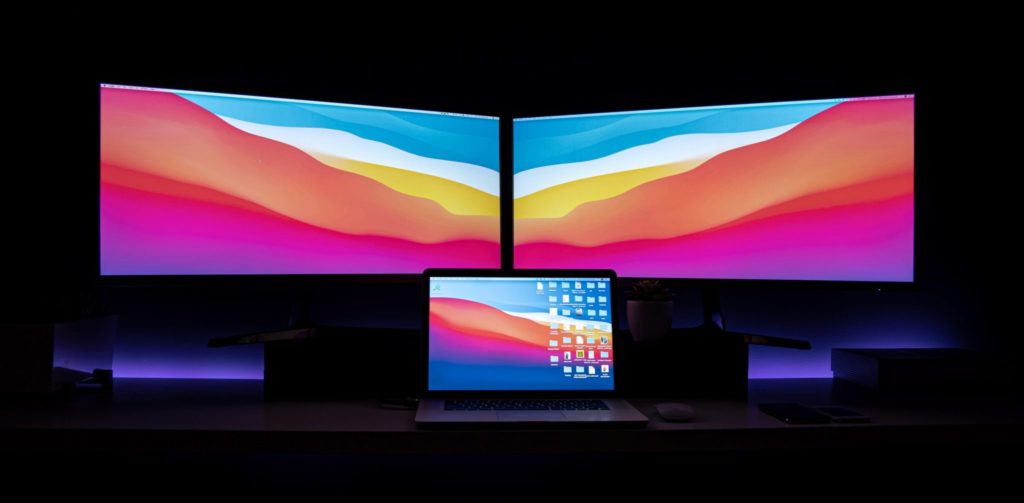Ultra-High Definition video displays (more commonly referred to as 4K displays), are becoming the new standard for home entertainment. But is that level of resolution also useful at work?
The answer will inevitably depend on what kind of work you do. If you deal with graphical details, such as AutoCAD, Photoshop, or other design/engineering applications, the question almost answers itself: Of course, you will want to see the highest resolution of detail and color possible.
But what about more mundane applications, like Excel spreadsheets or PowerPoint presentations? In these cases, the answer might surprise you. Let me explain.
Expectations
4K UHD refers to an active screen area of 3840×2160 pixels (playing off the nearly 4000 pixels in width). The much less common 4096×2160 pixel resolution is sometimes also referred to as True 4K and was originally introduced in digital cinemas. 4K UHD is exactly double the width and height of a Full HD display (1920×1080 pixels), yielding four times as many pixels in the same 16:9 aspect ratio.
Most of our common electronic devices already incorporate Full HD resolution at minimum. Many smartphone displays already have a resolution of 1080p or greater. Some tablets are displaying a resolution of 2560×1600, some notebooks are up to 2880×1800, with 4K desktop monitors becoming more commonplace. All these things influence expectations for the quality of the image’s viewers are accustomed to seeing, with the adoption of 4K in the home leading the way.
Keep in mind, this is the display’s resolution, not the physical size of the display. It is a measurement of how much fine detail is presented to the viewer. A way to think of this, is to think of an individual in need of a set of prescription eyeglasses. Without the glasses, everything is slightly blurry and much less detail can be seen. When looking through a set of prescription glasses, however, everything appears sharper and much more detail can be viewed.
Workflow
At office desks across the country, some companies now provide staff with a dual monitor set-up, so multiple applications can be accessed and viewed simultaneously. As we have discussed previously, most small-format monitors have already made the switch to 4K resolution to maximize usable screen space. Users may have that spreadsheet open on one monitor, and a PowerPoint open on the other, with several other applications open in the background. Dual 4K monitor set-ups are much more efficient, as users can access multiple applications in greater resolution, while maintaining an organized virtual workspace.
Screen Space = Workspace
A display’s resolution becomes more important as screen size increases. A 75” (or larger) display in a Boardroom, may present the same visual information (image) as you see on your phone, tablet, or laptop, but due to the increased size of the in-room display, the image can be viewed from a much greater distance without a noticeable loss of image quality.
A larger-format UHD display in a huddle room, conference room, or even boardroom can provide the same benefits to larger groups of participants. A properly sized display for the space and use case can accommodate multiple applications at once or allow much greater resolution for a single application, and the dramatically higher resolution allows certain applications to be viewed in greater detail by everyone in the room.
Greater screen resolution further allows the new work style that has become the new normal in the last year: videoconferencing and screen-sharing. Even as some employees begin returning to the office, having a simple in-person collaboration meeting in a conference room includes a high probability that some participants will still be participating remotely. UHD resolutions allow remote participants to fully participate and contribute, without sacrificing the content that is the focus of the meeting. Much in the same way as the multiple monitor configuration has helped the productivity of an individual, UHD displays in common workspaces can make for more efficient use of time, resulting in more productivity and team cohesion.
What’s Right for Me
It appears we should all quickly run out and buy the latest 4K display for every need we have. Confetti will fall from the heavens and our quality of life will improve, right? Not necessarily, remember we were discussing those applications earlier. 4K displays are an incredible resource that, when utilized correctly, can not only improve productivity and a business product, but they can also actually improve our health by reducing visual fatigue. However, in certain applications, a 4K display may have too high a resolution. Let me explain…
If you are viewing a design application, where finite detail is essential to the result, a 4K display is absolutely required, as it will provide much greater viewing detail than a standard Full HD display. However, if you are simply viewing a PowerPoint, word document, or other large-format picture application, the cost of the higher resolution display may not be necessary. Will a 4K display improve the visual impact of the presentation or allow more content to be displayed…possibly, however, it is not essential to the result of the product. Improperly specified higher resolution displays can cause certain applications’ text to appear much smaller (without scaling) and cause viewing fatigue or cumbersome workflow during meetings.
UHD is quickly becoming the new standard display resolution in the home and workplace. However, do not mistake this as a marketing strategy that will disappear in the future. Utilizing higher resolution displays in the correct application is an integral part of increasing business performance, improved employee health, and building stronger teams for the future.



